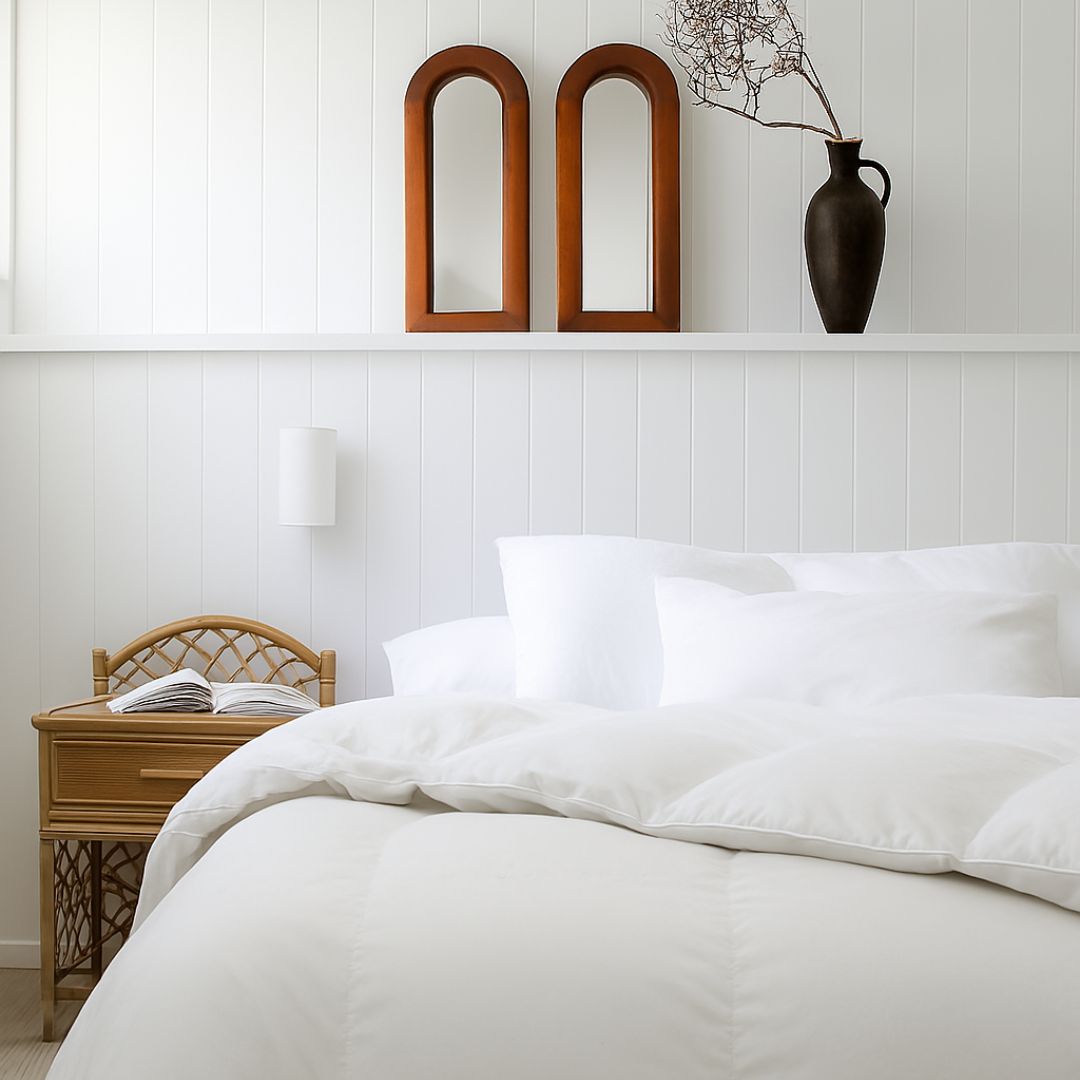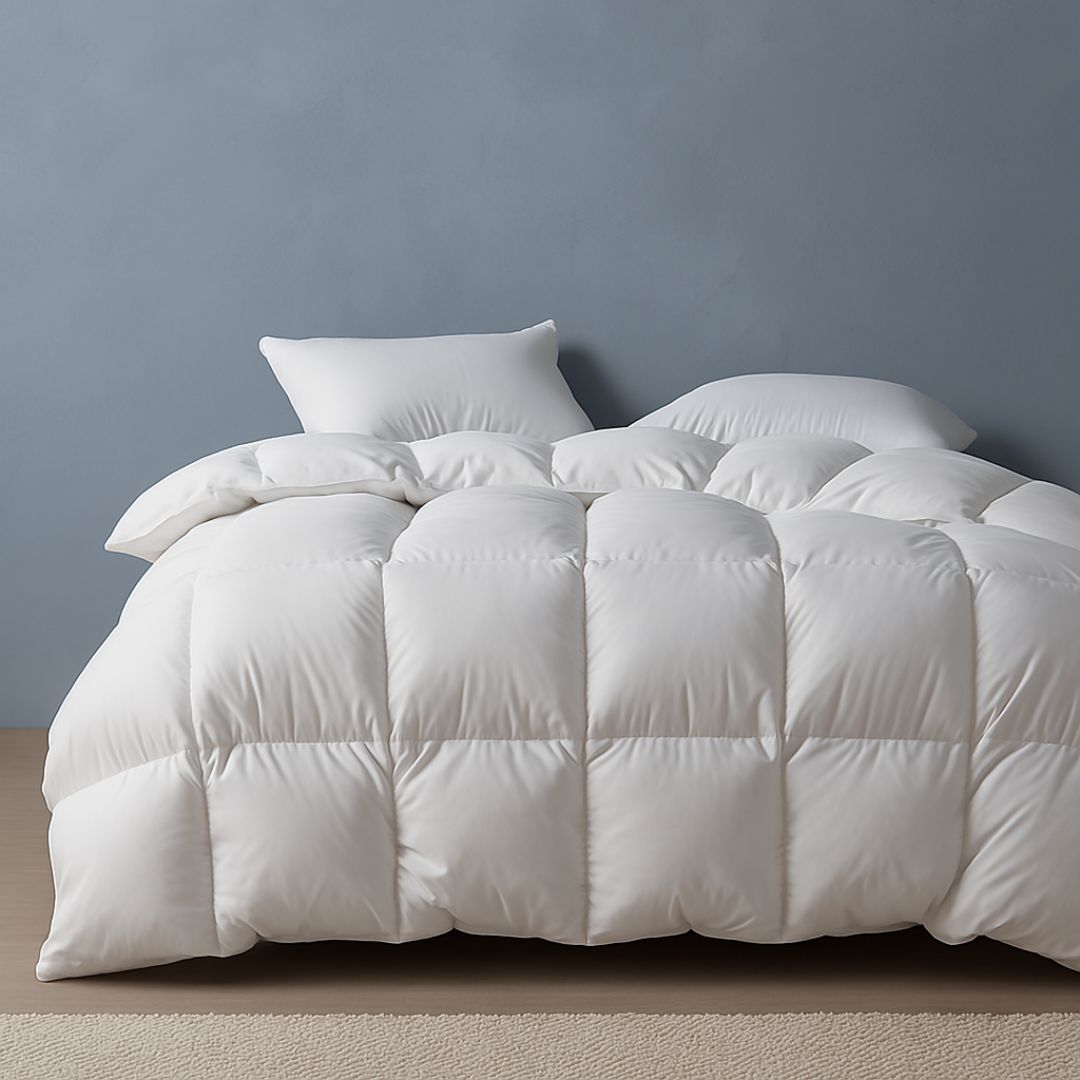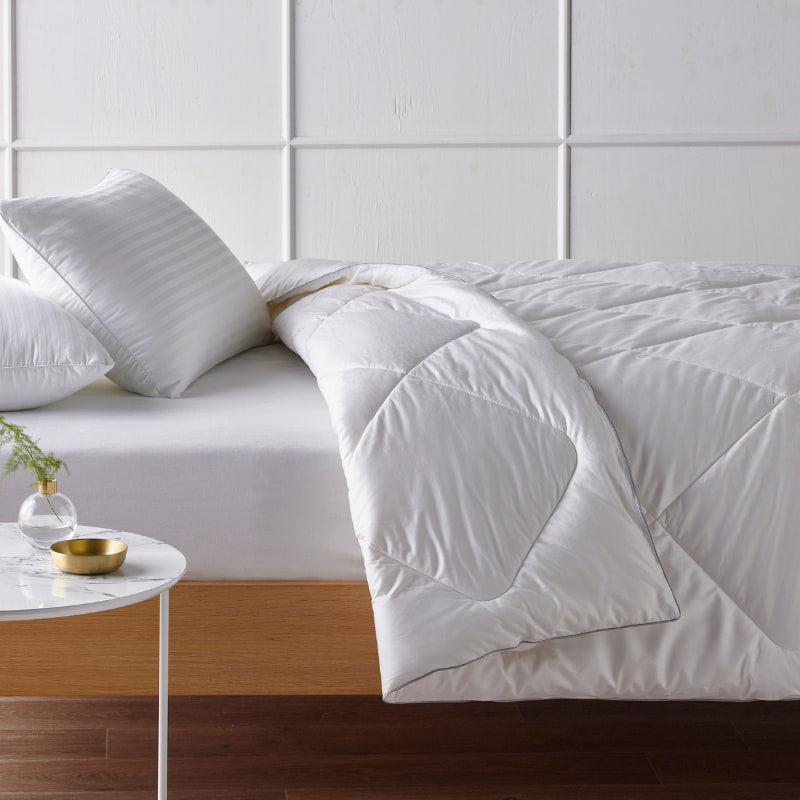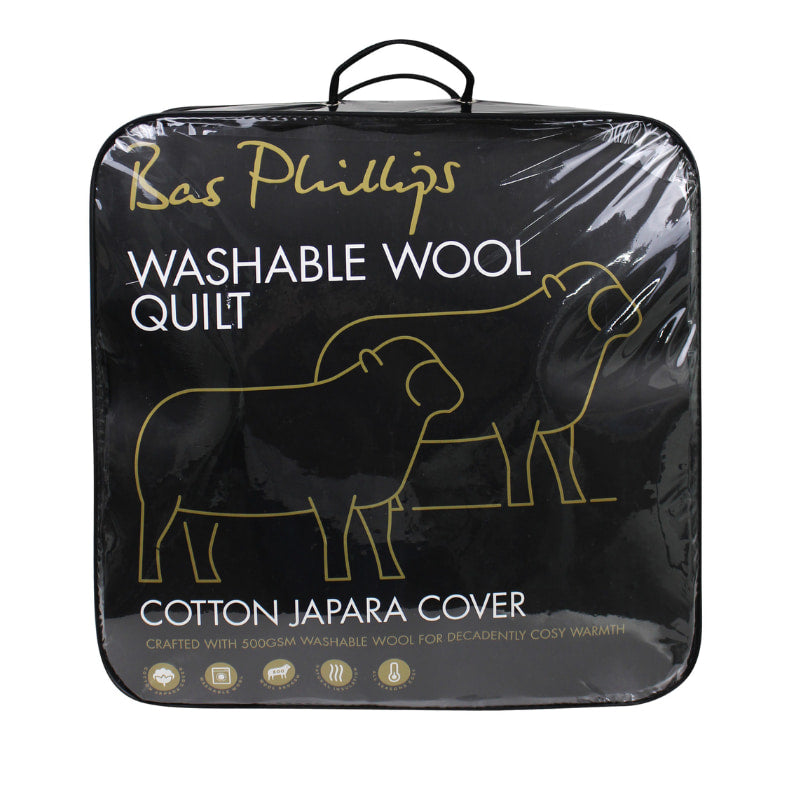As the Australian winter draws near and the days seem to be shorter, cosying up indoors becomes a top priority. Essential to your comfort during these cold months is finding the right winter quilt—or doona, as it's also called by many Australians.
In this guide, we’ll tackle burning questions like "What is the warmest quilt for winter in Australia?" and "How do I choose the right winter quilt?"
Join us as we delve into the world of winter quilts to help you stay warm through the chilly nights.
What Makes a Quilt Warm?
Several factors determine how warm a quilt will be:
- Filling Material – Different fillings provide different levels of insulation.
- GSM (Grams per Square Metre) – The higher the GSM, the warmer the quilt.
- Breathability & Moisture Control – Ensuring you stay warm without overheating.
- Weight & Loft – A higher loft traps more air, increasing warmth.
Let’s break down these elements in more detail to help you choose the perfect quilt for your needs.
Understanding Warmth: What is GSM in Quilts?
GSM, or Grams per Square Meter, plays a crucial role in determining the warmth of a quilt. This measurement indicates the weight and thickness of the quilt's filling; essentially, the higher the GSM, the more insulated and warmer the quilt.
For those chilly Australian winters, opting for a doona with a GSM range of 400 to 500 strikes the perfect balance between cosy warmth and manageable weight, ensuring you stay snug without feeling overwhelmed by the heaviness of your bedding.
At the Manchester we like to refer this simple scale for warmth ratings when buying quilts.
200-300Gsm - Summer Quilt
300-400GSM All Seasons Quilts
400-600 gsm - Winter Quilts

How to Choose the Perfect Winter Quilt
When it comes to selecting the ideal winter quilt, understanding your specific needs and environment is key:
Assess your bedroom’s climate:
Start by evaluating the typical temperature of your sleeping area. A quilt with a higher GSM is preferable if your bedroom is on the cooler side, as it provides extra warmth.
Choose the right filling:
Quilts are available in a variety of fillings, including down, wool, bamboo, and synthetic fibers. Each type of filling offers unique benefits, such as hypoallergenic properties or enhanced breathability. Select the filling that best aligns with your comfort preferences and any allergies that you may have.
Finding the right size:
Ensure the quilt you choose perfectly fits your bed for maximum comfort and warmth. Consider opting for a larger size than your bed to avoid any gaps that could let in cold air. For example if you have a king size bed it is quite common for people to upsize to a super king quilt.
Why Consider a Larger Quilt?
Upsizing your quilt can significantly enhance your sleeping experience by providing better coverage and reducing the chance of drafts.
Read more about this in our article "4 Reasons to Upsize Your Quilt."
Focus on Quality and Longevity:
When Shopping for a new quilt for winter opt for a high-quality doona that guarantees warmth and comfort over many winters. Trust in well-known brands and take the time to read reviews from other consumers to ensure that you are making a well-informed decision.
By focusing on these factors, you'll find a winter quilt that not only meets your needs but also enhances your sleeping comfort during the colder months.
Is a 500 GSM Quilt Warm Enough for Winter?
A 500 GSM quilt is generally warm enough for most Australian winter nights. Yet, if you live in regions with low temperatures or prefer a warmer sleeping environment, you might consider a quilt with a higher GSM. Options including Sienna Living Winter Quilt , Sienna Living Goose quilt etc.
Quilt Replacement Frequency: How Often Should You Replace?
For optimal warmth and cleanliness, it’s essential to refresh your doona periodically. Generally, it's recommended to replace your winter quilt every 5 to 7 years. However, if you invest in a high-quality down quilt, such as a Australian made down and feather quilt you might find it remains effective and cosy for up to 10 years.
Over time, any quilt's filling tends to compress and lose its insulating abilities, which can diminish the comfort and warmth it provides.
However when owning a down and feather quilt depending on the manufacturer they may offer rejuvenation for you quilt meaning they simply replace the down and feather in the quilt which may be a more cost effective option then buying a new quilt.
Read More: How Often To Wash & Replace Bedding
Understanding Quilt Fillings: Which Is the Warmest?
When seeking the lightest and warmest quilts for those brisk Australian winters, you have several excellent options:
Down & Feather Quilts: Ultimate Insulation
Best for: Cold climates, people who love a fluffy and luxurious feel.
Down quilts, made from duck or goose down, are known for their incredible warmth-to-weight ratio. They trap heat efficiently while remaining lightweight and breathable. If you’re looking for a high-performance winter quilt, down is a premium choice.
- Pros: Exceptionally warm, lightweight, breathable.
-
Cons: More expensive, may trigger allergies in some people (opt for hypoallergenic treated down)
Bamboo Quilts: Soft, Lightweight & Breathable
Best for: Hot sleepers who still want winter warmth.
Bamboo-filled quilts are incredibly soft and breathable. They’re an excellent choice for those who want a lighter yet warm quilt that wicks away moisture and prevents overheating.
- Pros: Naturally antibacterial, moisture-wicking, breathable.
-
Cons: May not provide the same level of insulation as down or wool.
Wool Quilts: Naturally Temperature-Regulating
Best for: Those who need warmth but tend to overheat.
Wool quilts are an Australian favourite, offering warmth and breathability in equal measure. Wool’s natural moisture-wicking properties help regulate body temperature, making it perfect for those who want warmth without feeling stifled.
- Pros: Excellent warmth and breathability, hypoallergenic, moisture-wicking.
-
Cons: Heavier than down, some people prefer a softer feel.
Microfibre & Polyester Quilts: Affordable & Cozy
Best for: Budget-conscious buyers looking for warmth without the hefty price tag.
Microfibre quilts mimic the softness of down while being hypoallergenic and easy to maintain. They offer good insulation and are a great option for those looking for an affordable winter quilt.
-
- Pros: Hypoallergenic, machine-washable, budget-friendly.
-
Cons: May not be as breathable as wool or down.
Best Quilts for Different Sleeping Preferences
- For Hot Sleepers: Bamboo or wool quilts help regulate body temperature.
- For Cold Sleepers: Down or high-GSM microfibre quilts provide the most warmth.
- For Allergy Sufferers: Hypoallergenic microfibre or specially treated down.
Not all Australian winters are the same!
- Sydney & Brisbane → Mild winters, best for 300-500 GSM quilts
- Melbourne & Adelaide → Cold nights, recommend 500 GSM
- Tasmania & Canberra → Extreme cold, 500 GSM or a down quilts recommended
Quilt Comparison Chart for Quick Decision-Making
A scannable comparison table will help readers choose the best quilt faster:
| Quilt Type | Warmth | Breathability | Hypoallergenic? | Best For |
|---|---|---|---|---|
| Down & Feather | 🔥🔥🔥🔥 | ✅ Good | ❌ Not always | Cold sleepers, luxury feel |
| Wool | 🔥🔥🔥 | ✅✅ Excellent | ✅ Yes | Regulating temperature, moisture control |
| Microfibre | 🔥🔥🔥 | ✅ Decent | ✅ Yes | Budget-friendly, easy care |
| Bamboo | 🔥🔥 | ✅✅✅ Best | ✅ Yes | Hot sleepers, summer-to-winter versatility |
Caring for Your Winter Quilt
To keep your quilt in top condition:
- Air it out regularly to maintain freshness.Use a quilt cover to protect it from
- dust and spills.
- Check care instructions—some quilts are machine washable, while others (like down) may require professional cleaning.
- Store properly when not in use to maintain loft and prevent damage.
Choosing the warmest quilt for winter depends on your needs. If you want ultimate warmth, go for a high-GSM down quilt. If you prefer breathability and temperature regulation, opt for wool or bamboo. For a budget-friendly yet warm solution, microfibre quilts are a great option.Whatever your preference, investing in a high-quality quilt will make winter nights cosier, ensuring you sleep comfortably no matter how cold it gets.





